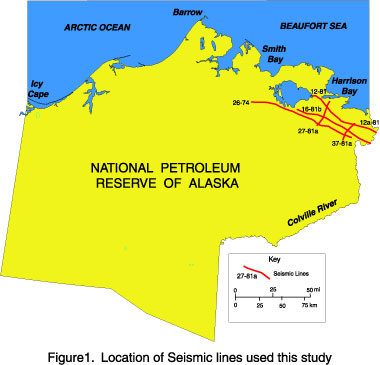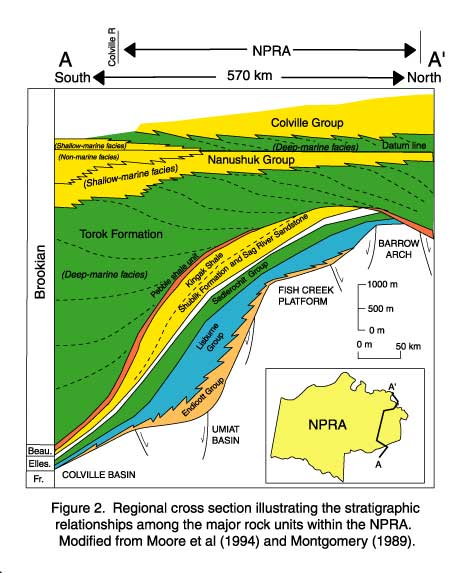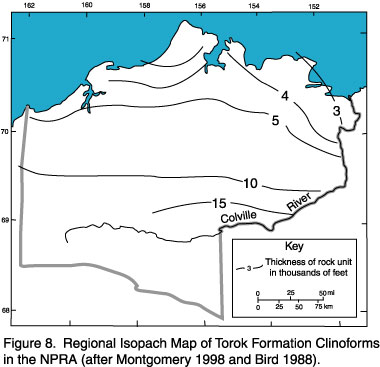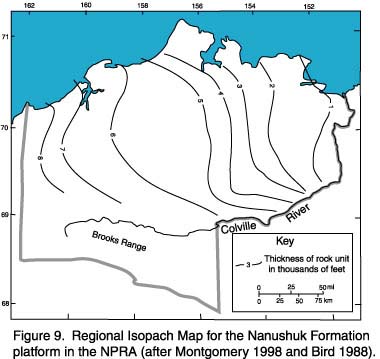| The Stratigraphic
Problem
The age-dating of the Lower Cretaceous sedimentary fill
of the NPRA is based on a public domain biostratigraphic
data provided by the USGS. The data set is limited and
provides poor biostratigraphic control for the area.
The seismic data
used in this study shows that the Nanushuk Group (shallow
deltaic and fluvial facies) and Torok Formation (delta slope
and basin floor fan facies) is formed by a series of distinct
north eastward prograding clinoforms. Many of these clinoforms
have truncated crests that suggest erosion by changes in
base level. Our hypothesis is that these clinoforms provide
an excellent opportunity to test the validity of age-dating
of sedimentary sequences using the sea level curve developed
by Haq and others (1987). Our contention is that the northern
flank of the basin (Barrow Arc) was relatively tectonically
stable during the Cretaceous, with a slow and constant rate
of subsidence, and a relatively steady influx of clastic
sediments into the Colville Basin. The intent of this study
was to establish a sequence stratigraphic framework for
the area, producing detailed chronostratigraphic charts
to separate and analyze the changes in base level controlling
the geometries and distribution of the sequences. The erosional
events on the seismic sections and chronostratigraphic were
compared to the changes in base level predicted by the sea
level curve developed by Haq, and others (1987) to establish
their relative timing.
Eustatic History
of Lower Cretaceous
Biostratigraphic data for the Lower Cretaceous sedimentary
fill of the NPRA suggest that the Nanushuk Group and Torok
Formation accumulated through the Aptian and the Cenomanian.
The sea level chart indicates that there were nine major
changes in sea level over this time period, at least three
of which might be expected to produce major second order
type 1 unconformities. |






